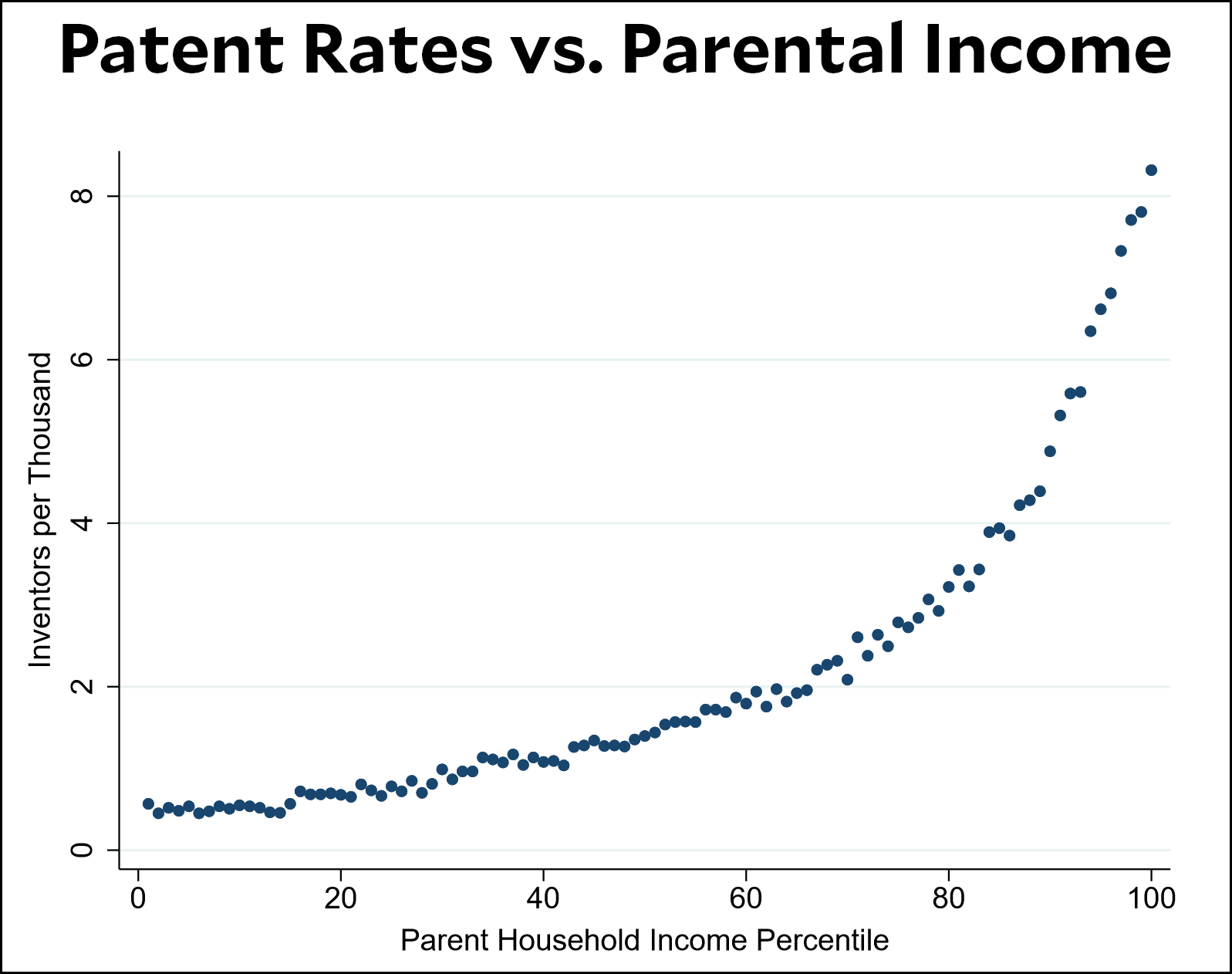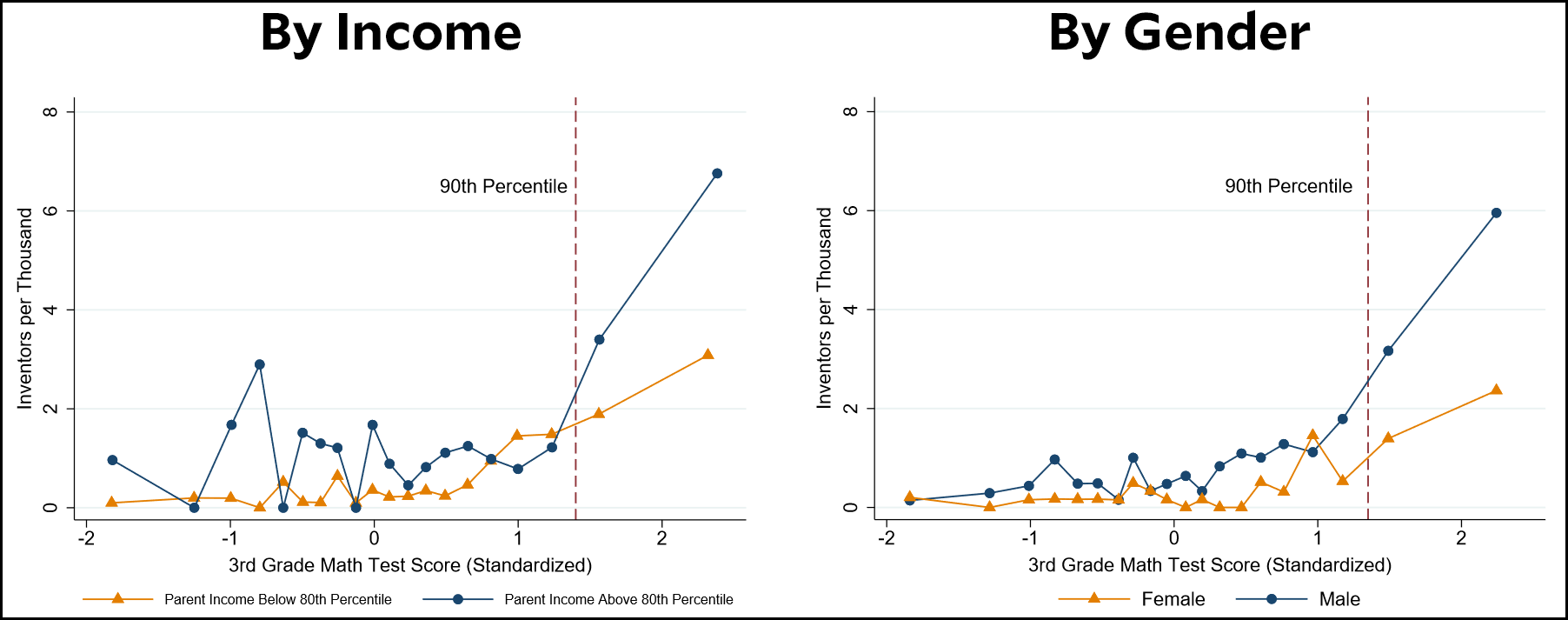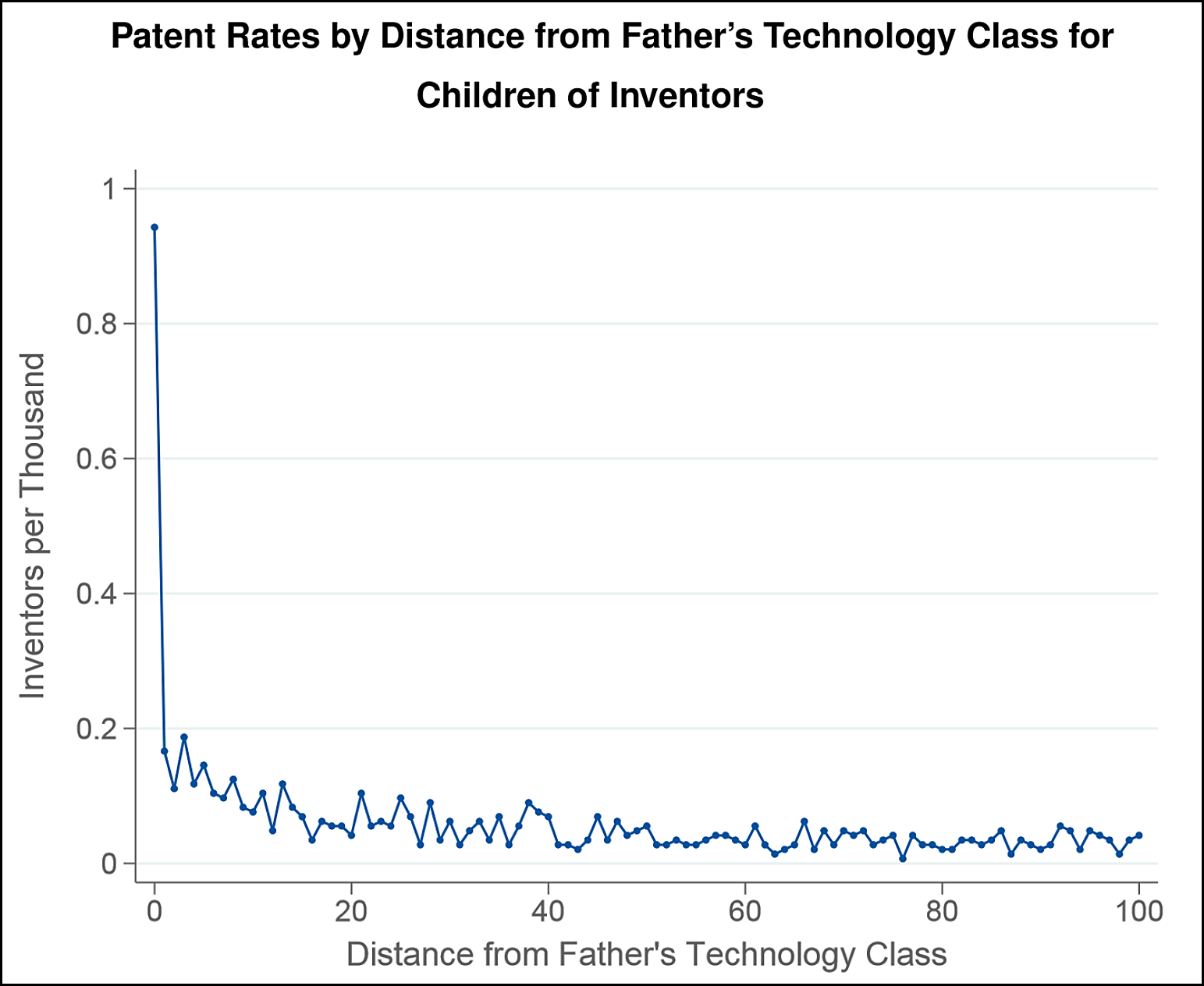Over at the Equality of Opportunity Project, a team of researchers has written a new paper that tries to explain some of the root sources of innovation. In particular, what kinds of kids are likely to become inventors? The researchers study this by looking at patent applications and then linking the names with a tax database in order to tease out the demographics of children who grow up to become inventors. I’m not 100 percent convinced that patent applications are a good way of measuring innovation, but it’s a start.
Basically, the entire study is an effort to explain this chart:

There’s nothing surprising here: Children in well-off households—which I suspect is mostly a proxy for well-educated households—are much more likely to become inventors than children in poor households. As usual, though, there could be two reasons for this:
- Biology: On average, high-income children are smarter than low-income children.
- Environment: On average, high-income children go to better schools; have parents who encourage them to study science and engineering; and just generally live better lives.
Unsurprisingly, the researchers conclude that it’s some of both. For a subsample in New York City, they obtained math and reading scores in 3rd grade and then compared the invention rate later in life for kids who got similar scores. What they found was that richer kids did better than poorer kids even if their scores were similar. If you are suspicious of this result, you probably shouldn’t be. After all, no one thinks that women are biologically less capable of being inventors than men, and yet here’s what their invention rate looks like:

If smart girls grow up to be inventors at much lower rates than equally smart boys, it means that basic IQ plays only a limited role. In fact, the researchers conclude that it accounts for only about a third of the difference. The other two-thirds comes from environment in various ways.
It’s not clear precisely what those other ways are, but one clue comes from looking at precisely what kinds of things kids grow up to invent. As it turns out, this is very far from random. They grow up to invent almost exactly the same stuff as their fathers:

If dad was a medical researcher, the kids grow up to create medical inventions. If he was a programmer, they grow up to create software inventions. In fields that are even the tiniest distance away from what dad did, invention rates plummet.
Now, this is not the whole study. There are plenty of other interesting tidbits that I might write about later. In the meantime, you can read a couple of more comprehensive summaries here and here. A set of slides from the authors is also a good place to go if you want to dive in a little further.
That said, the basic takeaway is fairly simple. First, most inventors are pretty smart as kids. They come almost exclusively from the ranks of children who score above the 90th percentile in math and reading in 3rd grade. Second, exposure to other inventors is wildly important. If your father was an inventor, you’re far more likely to become an inventor yourself if you have the necessary smarts. Girls are more likely to become inventors if they’re exposed to women who are inventors.
However, the phrase everyone is picking up from this paper is “lost Einsteins,” and I’m not sure just how accurate that is. Among girls, it’s almost certainly apropos: there are lots of girls who score well on tests of math and reading and could be inventors later in life if they had the right exposure and the right motivation. Among both the poor and children of color, things are a little less clear. In the New York data used to look at test scores, there are only 452 inventors (out of 400,000 children) in the whole dataset. That’s a pretty small group and a pretty small sample size. What’s more, the “inventor gap” only really shows up among kids who score in the 95th percentile, and that’s an even tinier number among both the poor and children of color. Even if you doubled or tripled the number of poor black kids who were exposed to inventors, the absolute number of newly minted inventors would be pretty minuscule.
I don’t mean to either disparage the importance of this study or to cast doubt on what we can do to inspire every child to become an inventor later in life. I would just take the overall results with a grain of salt. We can do more, but it’s not clear just how big a difference this would make for the future of innovation.















